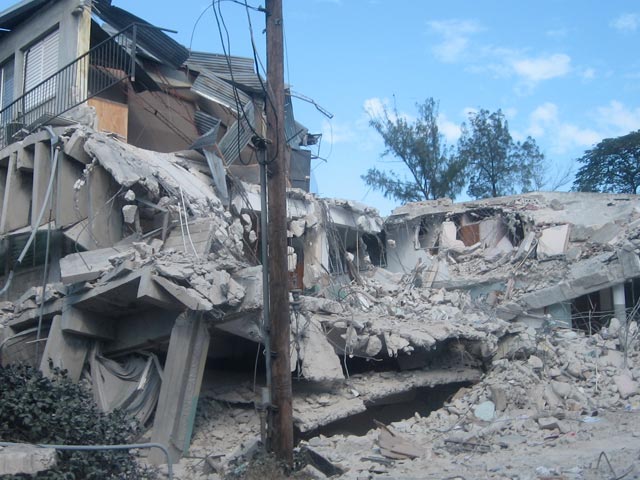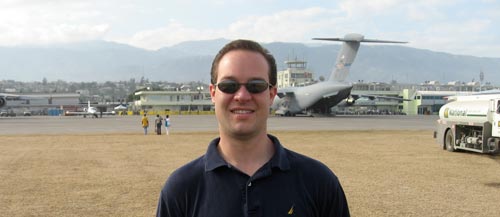
Engineering emergency response team

In the aftermath of the catastrophic earthquake that hit Haiti, engineer Rob Jeter recalls flashing back to lessons he learned at Arizona State University.
Jeter, who earned the class of 1997 Outstanding Senior Award in what was then ASU’s Department of Civil and Environmental Engineering, works for the Office of Design and Engineering in the U.S Department of State’s Bureau of Overseas Building Operations.
Shortly after the earthquake in January he was deployed to Haiti as part of an engineering emergency response team. The magnitude 7.0 quake left more than 200,000 people dead, 300,000 injured and a million people homeless. An estimated 250,000 residences and 30,000 commercial buildings had collapsed or were extensively damaged.
“It was my first time in a crisis situation,” Jeter says. “It was a high-stress environment. We had to work on the fly and react to volatile conditions.”
Working effectively as a part of a team, approaching complicated problems logically, being confident enough in your expertise to take the lead in challenging situations, “those things were always stressed by many of my ASU teachers,” Jeter says.
The team’s assignment was to assess the damage to more than 100 buildings—the residences and offices of U.S. embassy and diplomatic staffers in the country—and help provide for temporary housing needs of U.S. Foreign Service workers.
“My goal was to help make sure we had water and sanitation, and other basic facilities for rescue teams and security forces to do their jobs,” Jeter says. “I was using all the skills I’d learned in hydraulics, hydrology, structural and environmental engineering.”
Jeter’s work in Haiti has been only the most dramatic of the learning experiences he’s had on the job. He’s responsible for civil engineering aspects of capital and maintenance projects for nearly half of the more than 300 U.S. embassies and consulates around the world.
In the past year and a half, he has worked in Afghanistan, Pakistan, Yemen, Mauritania, Chile, Finland, Lebanon, England and Germany. He’s worked in at least 20 different countries since joining the State Department in 2008.
“[In] real-life engineering,” he says, “it’s critical to understand the people, and the cultural and social realities in whatever environment you’re working in,” he says.
Jeter is using a range of engineering expertise. He’s on the State Department’s “green team,” as the water conservation coordinator for the Energy and Sustainable Design Unit. In December 2010, he led an engineering team overseas to develop strategies for efficient water use and recycling. He is also the flood mitigation specialist on a team that is designing ways to protect U.S. overseas properties from the impact of natural hazards and disasters.
Jeter worked in the private sector for more than a decade before taking the federal position. Going from the “for-profit model of business to the mission-based model is something that’s in line with my core values,” he says. “I think colleges can do a better job of helping students learn if they will fit better into one of those two models.”
As for his own college education, Jeter says his best teacher was the one who was the hardest on students.
“I always appreciated how tough he was,” he says of Robert Hinks, now an associate professor in the College of Technology and Innovation at ASU’s Polytechnic Campus. “He was very serious. But if you put in the effort, he made himself available to help you succeed.”
“Thank you and ASU,” Jeter wrote in a letter to Hinks, “for giving me what it takes to make a difference in the world.”




































